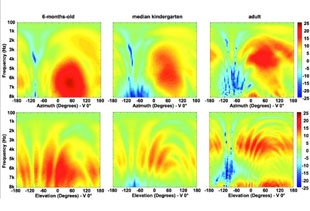Abstract
Background noise level and reverberation time are the standard parameters used to evaluate speech understanding in a classroom. This space can be excited by an outdoor source of noise even when it has an acoustic treatment. The room geometry, usually rectangular, creates differences in the signal-to-noise ratio S/N between all listening positions due to eigenmodes. In the present study, 5 listening positions are used in a standard size classroom excited by a virtual source of pink noise. This source is placed in a corner to represent an external noise source. Using the matrix sentence method developed by Hochmuth et al. [Int. J. of Audiology, 51, 536–544 (2012)], 300 sentences from a virtual speaker are used as the signal source located at the opposite corner. In the reference point at the center of the room speech source is adjusted to a LAeq of 65 dBA. Noise source is adjusted to reach a A-weighted S/N (S/N(A)) of approximately -3 dB at this point. The level difference among the positions is less than 3.2 dB considering the S/N(A) but can reach more than 8 dB considering the S/N. Both sources are recorded simultaneously with a dummy head in all positions. A subjective test is then performed with headphones to evaluate intelligibility in these listening points. Room acoustic parameters for intelligibility, D50, STI, S/N and S/N(A), are compared with the subjective test results. Results show that speech recognition is different between all points but no correlation can be found with the objective parameters. In this context, intelligibility is not being affected by room eigenmodes.

